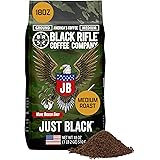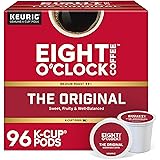A Coffee Design Classic Revisited: The Braun KF20 Aromaster
In 1972, the design world was introduced to a new standard of minimalist elegance with the arrival of the Braun KF20 Aromaster. As highlighted in the accompanying video, this iconic coffee maker, meticulously crafted by Florian Seiffert and the legendary Braun design team, quickly became a benchmark for clean, functional aesthetics. It wasn’t just another appliance; it represented a design philosophy that would influence countless products and inspire generations of designers. This piece delves deeper into the legacy of the Braun KF20, exploring its enduring appeal as a design classic and the intriguing question of its practical performance in today’s coffee landscape.
The Legacy of Braun Design: Minimalism Defined
The Braun KF20 Aromaster emerged during a pivotal era for the company, solidifying its reputation for super minimalist design. This period was heavily influenced by industrial designer Dieter Rams, whose ten principles of good design advocated for products that were innovative, aesthetic, understandable, unobtrusive, honest, long-lasting, thorough down to the last detail, environmentally friendly, and, critically, “as little design as possible.” The KF20 perfectly embodies many of these tenets, showcasing a commitment to reducing a product to its essential elements.
Florian Seiffert, working within this powerful design ethos, created a coffee maker that stripped away all unnecessary ornamentation. The result was a functional sculpture, characterized by clean lines, geometric forms, and a muted color palette that allowed the user experience to take center stage. This minimalist approach wasn’t just about appearance; it was about creating a sense of clarity and ease of use, making the KF20 Aromaster an intuitive and visually pleasing addition to any kitchen.
Unpacking the KF20 Aromaster’s Aesthetic Appeal
The design of the Braun KF20 Aromaster is a masterclass in thoughtful integration and simplicity. Its elegant structure places the water reservoir at the top, allowing for gravity-fed brewing, while the glass carafe sits neatly at the bottom. A clever design choice allows the carafe to be removed, revealing the hidden cone where coffee grounds are placed. This streamlined approach minimizes clutter and promotes a sense of calm, which was a revolutionary concept for kitchen appliances at the time.
Furthermore, the KF20’s aesthetic impact extended far beyond its immediate function. Its sleek profile and intuitive layout became aspirational, inspiring countless other companies to adopt similar minimalist principles. The absence of extraneous buttons or complex displays underscored a belief in user-centric design, making the act of brewing coffee feel sophisticated yet accessible. This design language made the Braun KF20 Aromaster a true icon of the mid-century modern aesthetic, appealing to those who valued both form and understated elegance.
From Museum Piece to Daily Driver? The Coffee Quality Conundrum
While the Braun KF20 Aromaster undeniably excels in design, the video poses a critical question: does its coffee brewing quality match its aesthetic brilliance? As the speaker humorously yet definitively states, “No.” This observation highlights a common challenge with vintage appliances, especially those used for consumables like coffee. Technology evolves rapidly, and what was cutting-edge in 1972 may not meet today’s expectations for coffee quality.
Modern coffee brewing science has made significant strides in understanding extraction, temperature stability, and water distribution. Many contemporary coffee makers boast precise temperature control, showerhead designs for even water saturation, and improved heating elements that maintain optimal brewing temperatures throughout the entire cycle. Vintage machines like the Braun KF20, while perfectly adequate for their time, often had simpler heating mechanisms and less control over these crucial variables. This can lead to under-extraction, resulting in coffee that tastes weak, sour, or simply lacks the complexity and richness desired by today’s discerning coffee drinkers.
Preserving Design History vs. Modern Performance
The speaker’s quip about using a “museum piece” as a daily driver perfectly encapsulates the dilemma faced by admirers of vintage design. On one hand, the Braun KF20 Aromaster is a tangible piece of design history, a testament to a golden age of industrial innovation. Its rarity and iconic status make it a desirable collectible, worthy of display and admiration. For enthusiasts of mid-century modern aesthetics or Braun’s legacy, owning a KF20 is a connection to a specific moment in design evolution.
On the other hand, the primary function of a coffee maker is to brew delicious coffee. For many, modern performance simply outweighs historical novelty in daily use. The practicality of a high-performing, contemporary coffee machine that delivers consistently excellent brews is often a non-negotiable. This doesn’t diminish the KF20’s design value, but it does shift its role from a workhorse to a curated object, perhaps for special occasions or purely for display. Balancing these two perspectives is a common challenge for collectors of vintage appliances.
Ultimately, the Braun KF20 Aromaster remains a powerful reminder that design is not just about aesthetics; it’s about problem-solving and expressing a particular vision. Though its capabilities as a coffee brewer may have been surpassed by modern technology, its impact on industrial design and its enduring appeal as a design classic are undeniable. Whether admired on a shelf or occasionally used to brew a nostalgic cup, the Braun KF20 Aromaster continues to inspire and provoke thought about the interplay between form, function, and the passage of time.







